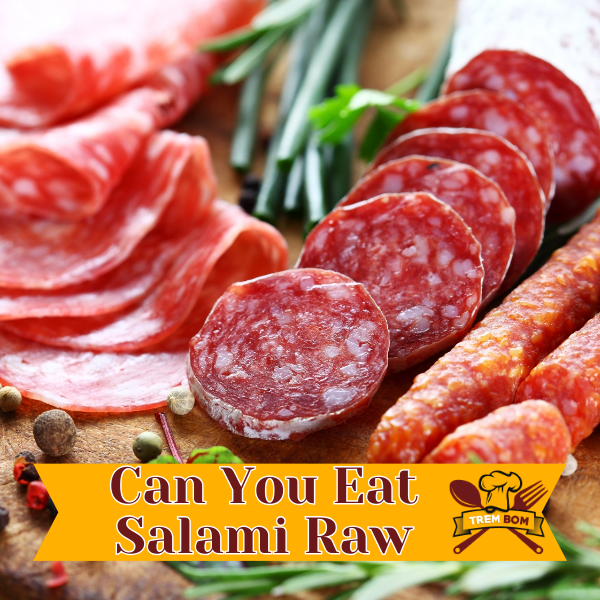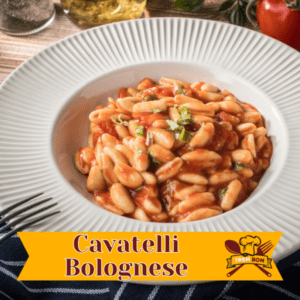
Welcome to our article on the safety of consuming raw salami. Whether you’re a fan of salami or simply curious about its raw consumption, we’re here to provide you with all the facts you need to make an informed decision.
Salami is a popular cured meat that is often enjoyed in various dishes and snacks. However, there is some debate about whether it is safe to eat salami raw. In this article, we will delve into the risks and benefits associated with consuming raw salami, and provide guidelines to ensure your salami consumption safety.
Key Takeaways:
- Consuming raw salami carries certain risks.
- Proper handling and adherence to safety guidelines can help minimize these risks.
- Cooking salami thoroughly eliminates potential risks associated with raw consumption.
- Individual factors, such as age and health conditions, can influence the safety of eating raw salami.
- Consider alternative options, such as cooked salami, if you are hesitant about consuming it raw.
Understanding Salami
Before discussing the safety of eating raw salami, let’s take a closer look at what salami actually is. Salami is a type of cured sausage that is made from ground meat, typically beef or pork, mixed with seasonings and spices. It is then fermented, dried, and aged to develop its distinctive flavor and texture.
Salami is often enjoyed as a cold cut, sliced thinly and served on sandwiches or charcuterie boards. It can also be cooked or incorporated into various dishes for added flavor.
The Process of Making Salami
The process of making salami involves several steps to ensure its safety and flavor. Here is a simplified overview:
- Preparation: The meat is ground and mixed with salt and various seasonings, such as pepper, garlic, and spices, to enhance its taste.
- Fermentation: Starter cultures, usually consisting of beneficial bacteria, are added to the mixture to control acidity levels and promote proper fermentation.
- Casing: The meat mixture is stuffed into casings made from either natural or synthetic materials, which help shape the salami and hold it together during the aging process.
- Aging: The salami is hung in a controlled environment, usually at a specific temperature and humidity, to allow for the development of flavor and texture over time.
- Drying: During the aging process, the salami gradually loses moisture, resulting in a firm and dry texture.
Guidelines for Handling and Consuming Raw Salami
While enjoying raw salami can be a delicious experience, it is important to follow certain guidelines to ensure its safety:
- Storage: Store raw salami properly in a cool and dry place, away from direct sunlight. It is crucial to keep it at the recommended temperature to prevent bacterial growth.
- Handling: When handling raw salami, make sure to wash your hands thoroughly before and after touching it to avoid cross-contamination.
- Slicing: Use a clean and sharp knife to slice raw salami, ensuring that the knife is sanitized between each cut.
- Consumption: If you choose to eat raw salami, it is recommended to consume it within a certain time frame to minimize the risk of bacterial contamination.
Remember, raw salami should only be consumed if you are confident in its quality and origin. If you have any doubts or concerns, it is best to opt for cooked salami or other cured meats as an alternative.
Now that we have a better understanding of salami and its production process, let’s explore the potential risks associated with eating raw salami in the next section.
Risks of Eating Raw Salami
Consuming raw meat, including raw salami, can pose several health risks. It is important to be aware of these hazards to protect ourselves and our loved ones. Here, we outline the potential dangers associated with eating raw salami and provide safety tips to minimize these risks.
Potential Health Hazards:
- Bacterial Contamination: Raw salami may contain harmful bacteria like Salmonella, E. coli, or Listeria monocytogenes. These bacteria can cause foodborne illness and lead to symptoms like nausea, vomiting, diarrhea, and abdominal pain.
- Parasitic Infections: Raw salami can also harbor parasites such as Toxoplasma, Trichinella, or Cryptosporidium. These parasites can cause severe health problems and require medical treatment.
“We cannot underestimate the risks associated with consuming raw salami. It is crucial to prioritize food safety and take necessary precautions to protect our well-being.”
Safety Tips for Consuming Raw Salami:
- Choose quality salami: Purchase raw salami from reputable sources, ensuring it has been properly prepared and stored.
- Storage: Keep raw salami refrigerated at temperatures below 40°F (4°C) to inhibit bacterial growth.
- Thorough cooking: If you have concerns about the safety of raw salami, cooking it thoroughly is the best option. Proper cooking kills harmful bacteria and parasites.
- Hygiene practices: Adhere to good hygiene practices while handling raw salami, such as washing hands before and after touching it.
- Separate utensils: Use separate utensils and cutting boards for raw and cooked foods to prevent cross-contamination.
- Awareness of personal risk factors: Individuals with compromised immune systems, the elderly, pregnant women, and young children may be more susceptible to infections from raw salami. Consult a healthcare professional if you have specific concerns.
By implementing these safety measures, we can enjoy raw salami while minimizing the potential health hazards. Let’s prioritize our health and well-being by making informed choices.
| Risk Factors | Safety Measures |
|---|---|
| Compromised immune systems, the elderly, pregnant women, and young children | Consult a healthcare professional for personalized advice |
| Bacterial contamination | Cook raw salami thoroughly before consumption |
| Parasitic infections | Avoid consuming raw salami altogether or cook it thoroughly |
Bacterial Contamination
When it comes to consuming raw salami, bacterial contamination is a significant concern. Raw meat, including salami, can harbor various bacteria that can pose health risks if not handled and consumed properly. In this section, we will discuss common bacteria that can be present in raw salami and provide guidelines to reduce the risk of contamination.
Common Bacteria in Raw Salami
Raw salami can potentially harbor harmful bacteria such as:
- Salmonella: This bacteria is commonly associated with poultry, eggs, and raw meats, including salami. It can cause food poisoning symptoms such as diarrhea, abdominal cramps, and fever.
- E. coli: Certain strains of E. coli can cause severe illnesses, including bloody diarrhea and kidney failure. Raw meat products like salami can sometimes be contaminated with these harmful bacteria.
- Listeria: Listeria monocytogenes is a bacteria that can cause listeriosis, a serious infection. Pregnant women, elderly individuals, and people with weakened immune systems are particularly susceptible.
To minimize the risk of bacterial contamination in raw salami, it is crucial to follow these guidelines:
- Choose reputable sources: Purchase raw salami from trusted suppliers who follow strict food safety standards.
- Check for proper storage: Make sure that the salami is stored in a cool environment, ideally below 40°F (4°C), to inhibit bacterial growth.
- Inspect for signs of spoilage: Examine the salami for any unusual smells, sliminess, discoloration, or mold growth. If any of these signs are present, discard the salami immediately.
- Practice good hygiene: Wash your hands thoroughly before and after handling raw salami. Clean and sanitize any utensils, cutting boards, or surfaces that come into contact with the salami.
- Keep raw salami separate: Prevent cross-contamination by storing raw salami away from other foods, especially those that will be consumed without further cooking.
- Cook if in doubt: If you are unsure about the safety of consuming raw salami, cooking it thoroughly can eliminate potential bacterial risks. Heat the salami to an internal temperature of at least 165°F (74°C) to ensure its safety.
“Proper handling and adherence to safety guidelines are essential when consuming raw salami to minimize the risk of bacterial contamination.”
By following these guidelines, you can enjoy raw salami with an added layer of safety. However, it is important to note that individuals with compromised immune systems, pregnant women, and young children may be at a higher risk of foodborne illnesses and should consult with a healthcare professional before consuming raw salami.
| Bacteria | Symptoms | Prevention |
|---|---|---|
| Salmonella | Diarrhea, abdominal cramps, fever | – Purchase raw salami from reputable sources – Store salami below 40°F (4°C) – Practice good hygiene |
| E. coli | Bloody diarrhea, kidney failure | – Choose trusted suppliers – Inspect for signs of spoilage – Keep raw salami separate |
| Listeria | Listeriosis infection | – Wash hands thoroughly – Clean utensils and surfaces – Cook salami if unsure |
Foodborne Illnesses
Eating raw salami can pose significant risks to your health. Raw meat, including salami, can be a breeding ground for harmful bacteria that can cause foodborne illnesses.
Foodborne illnesses are caused by consuming contaminated food, and the symptoms can range from mild discomfort to severe illness.
When it comes to raw salami, there are specific foodborne illnesses that you need to be aware of:
| Foodborne Illness | Symptoms | Onset Time |
|---|---|---|
| Salmonellosis | Diarrhea, fever, abdominal cramps | 12-72 hours |
| Listeriosis | Fever, muscle aches, nausea, confusion | 1-4 weeks |
| E. coli Infection | Severe diarrhea, abdominal pain, vomiting | 1-10 days |
| Botulism | Double vision, difficulty swallowing, muscle weakness | 12-72 hours |
It’s important to note that these illnesses can be particularly dangerous for vulnerable populations, such as the elderly, young children, pregnant women, and individuals with weakened immune systems.
Safe salami consumption is crucial to minimize the risk of foodborne illnesses. In the next section, we will explore guidelines and practices that can help you enjoy salami while ensuring your safety.
Cooking Salami
If you have concerns about the safety of eating raw salami, cooking it thoroughly can eliminate potential risks. There are various cooking methods for salami that can ensure its safety for consumption. Below, we provide you with some guidelines on how to cook salami properly.
Oven-Baked Salami
Oven-baking is a popular method for cooking salami as it allows for even cooking and the preservation of its rich flavor. To oven-bake salami:
- Preheat your oven to 350°F (175°C).
- Remove the salami from any casing and wrapper.
- Place the salami on a baking sheet lined with parchment paper.
- Bake the salami in the preheated oven for 20-30 minutes or until it reaches an internal temperature of 160°F (71°C).
- Allow the cooked salami to cool before slicing and serving.
Grilled Salami
Grilling salami adds a smoky and charred flavor to this cured meat. To grill salami:
- Preheat your grill to medium-high heat.
- Remove the salami from any casing and wrapper.
- Place the salami directly on the grill grates.
- Grill the salami for 5-7 minutes, flipping once, until it is heated through and has grill marks.
- Remove the salami from the grill and let it rest for a few minutes.
- Slice the grilled salami and serve.
Sautéed Salami
Sautéing salami can enhance its flavors and create a crispy texture. To sauté salami:
- Heat a pan over medium heat and add a small amount of oil.
- Remove the salami from any casing and wrapper.
- Place the salami slices in the heated pan and cook for 2-3 minutes on each side until they become crispy.
- Remove the sautéed salami from the pan and let it cool on a paper towel to absorb excess oil.
- Serve the sautéed salami as a topping for salads, pasta dishes, or sandwiches.
Remember to cook salami until it reaches an internal temperature of 160°F (71°C) to ensure that any potential bacteria are eliminated. By following these cooking methods and guidelines, you can enjoy salami safely while minimizing the risks associated with eating raw salami.
| Salami Cooking Method | Estimated Cooking Time | Safe Internal Temperature |
|---|---|---|
| Oven-Baked | 20-30 minutes | 160°F (71°C) |
| Grilled | 5-7 minutes | 160°F (71°C) |
| Sautéed | 4-6 minutes | 160°F (71°C) |
Cultural Considerations
In various cultures around the world, consuming raw salami is a cherished tradition. These cultural practices shape the way individuals approach the safety considerations of eating raw salami. Understanding the cultural context can provide valuable insights into the reasons behind this age-old practice.
One such example is Italy, where salami is deeply rooted in culinary heritage. Italians have been enjoying raw salami for centuries, incorporating it into various dishes and delicacies. It is important to note that traditional Italian salami undergoes a meticulous curing process, ensuring safety and flavor. The Italians’ expertise in salami production and their stringent quality control measures contribute to their confidence in consuming raw salami.
Similarly, in Spain, the iconic tapas culture includes a wide array of cured meats, including raw salami. Spaniards relish the flavors and textures of these traditional delicacies, showcasing their culinary prowess and appreciation for preserved meats. The careful selection and handling of raw salami in these cultural contexts further enhance its safety.
The Role of Tradition
Traditions play a significant role in shaping cultural considerations surrounding raw salami consumption. Passed down from one generation to another, these customs foster a sense of identity and enable the preservation of culinary heritage. The knowledge and techniques developed over time ensure that the salami is prepared and consumed safely.
Safe Salami Consumption in Cultural Contexts
While cultural practices can influence attitudes towards raw salami consumption, it is crucial to prioritize safety. Proper handling, storage, and sourcing of raw salami are paramount to minimize health risks. Adhering to food safety guidelines while retaining cultural traditions ensures a balance between preserving heritage and safeguarding our well-being.
By appreciating the cultural significance and observing safe salami consumption practices, we can genuinely enjoy the flavors and experiences associated with raw salami while minimizing the potential health hazards.
| Culture | Salami Consumption Practices |
|---|---|
| Italy | Raw salami is a staple in Italian cuisine, with traditional curing processes ensuring safety and flavor. |
| Spain | Spaniards embrace the tapas culture, relishing raw salami and other cured meats with great appreciation for culinary heritage. |
| France | The French take pride in their charcuterie traditions, including high-quality raw salami varieties that are enjoyed in various culinary preparations. |
Safe Salami Consumption
When it comes to enjoying raw salami, safety should be a top priority. While there are risks associated with consuming raw meat, including salami, following the right guidelines can help minimize those risks and allow you to savor this delicious cured meat.
Here are some important guidelines to ensure safe salami consumption:
- Choose quality salami: Always opt for high-quality salami from reputable sources. Look for salami that is made from properly cured and aged meat. Avoid salami that appears discolored, slimy, or has an unpleasant odor.
- Proper handling: Raw salami should be handled with care to prevent bacterial contamination. Wash your hands before and after handling the salami. Keep the salami refrigerated at all times and avoid cross-contamination with other foods.
- Slice it fresh: When ready to consume, freshly slice the salami using a clean knife or slicer. This will minimize the potential for bacterial growth and maintain the flavor and texture of the salami.
- Store it correctly: If you have leftover salami, store it properly in an airtight container in the refrigerator. Consume it within a few days to ensure freshness.
- Know your personal health: Individuals with compromised immune systems, pregnant women, young children, and elderly individuals should exercise extra caution when consuming raw salami. Consult with a healthcare professional if you have any doubts or concerns.
By following these guidelines, you can minimize the potential health hazards associated with consuming raw salami while still enjoying its unique flavor and taste. Remember, it’s essential to prioritize food safety and make informed choices based on your personal circumstances.
Personal Risk Factors
When it comes to the safety of eating raw salami, individual factors play a crucial role. Several key aspects, such as age, health conditions, and immune system strength, can affect the risks associated with consuming raw salami. It is essential to understand these personal risk factors and take appropriate precautionary measures to protect your health.
Age
Age is an important consideration when it comes to consuming raw salami. Certain age groups, such as the elderly, young children, and individuals with compromised immune systems, are more susceptible to foodborne illnesses. Their immune systems may not be as robust in fighting off harmful bacteria found in raw meat.
Health Conditions
Underlying health conditions can increase the risks of consuming raw salami. People with weakened immune systems, chronic illnesses, or conditions that affect digestion may have a reduced ability to handle potential pathogens present in raw meat. If you have any pre-existing health issues, it is advisable to consult with a healthcare professional before consuming raw salami.
Immune System Strength
The strength of your immune system plays a significant role in determining the risks of consuming raw salami. A healthy and robust immune system can effectively combat harmful bacteria and minimize the chances of foodborne illnesses. However, individuals with compromised immune systems may be more susceptible to infections and should exercise caution when consuming raw salami.
Understanding your personal risk factors is essential for making informed decisions regarding the consumption of raw salami. If you fall into any high-risk categories mentioned above, it may be advisable to avoid raw salami altogether or opt for safer alternatives, such as cooked salami. Always prioritize your health and well-being when making dietary choices.
| Risk Factor | Recommendation |
|---|---|
| Young children and the elderly | Avoid consuming raw salami to minimize the risk of foodborne illnesses. |
| Individuals with weakened immune systems | Consult with a healthcare professional before consuming raw salami and consider alternative options. |
| People with chronic illnesses | Exercise caution and assess the potential risks of consuming raw salami based on your specific condition. |
| Individuals with digestion-related issues | Consult with a healthcare professional to determine if consuming raw salami is safe for you. |
Alternatives to Raw Salami
If you have concerns about the safety of consuming raw salami, you’ll be glad to know that there are alternative options available. While raw salami is a traditional delicacy enjoyed by many, there are cooked salami products and other similar cured meats that offer a safer alternative.
Cooked Salami Products
Cooked salami is a popular alternative to raw salami, as it undergoes a thorough cooking process that helps eliminate potential bacteria and foodborne illnesses. The high heat kills harmful pathogens, making it a safer choice for those seeking a delicious salami experience without the risks associated with raw meat consumption.
Similar Cured Meats
If you’re looking for alternatives beyond salami, there are several other cured meats that you can enjoy with peace of mind. These meats are typically processed and cured to ensure their safety, providing a similar flavor profile to salami. Some of the popular options include:
- Pepperoni
- Prosciutto
- Chorizo
- Soppressata
- Capocollo
These cured meats can be enjoyed on their own, in sandwiches, or as ingredients in various recipes. They offer a diverse range of flavors and textures, making them an excellent substitute for raw salami.
It’s important to note that even with these alternatives, it’s crucial to follow proper guidelines for handling and storing cured meats to maintain their safety and quality. Check the product labels for specific storage instructions and expiry dates.
| Alternative | Description |
|---|---|
| Pepperoni | A popular Italian-American cured sausage, often used as a pizza topping. |
| Prosciutto | A dry-cured ham with a rich, delicate flavor, typically enjoyed thinly sliced. |
| Chorizo | A spicy and tangy Spanish cured sausage, perfect for adding a kick to dishes. |
| Soppressata | An Italian dry-cured salami with a robust flavor, often seasoned with garlic and spices. |
| Capocollo | A traditional Italian cold cut made from cured pork shoulder or neck, delivering a flavorful and slightly spicy taste. |
By exploring these alternatives, you can still enjoy the savory goodness of cured meats while prioritizing your health and safety. Remember, it’s always essential to choose high-quality products from reputable sources and handle them with care.
Conclusion
After careful consideration of the facts, it is clear that eating raw salami carries certain risks. Raw salami can be contaminated with bacteria that can cause foodborne illnesses. However, this does not mean that you cannot enjoy salami in its raw form. With proper handling and adherence to safety guidelines, it is possible to consume raw salami safely.
When it comes to salami consumption safety, make informed decisions based on your personal circumstances and preferences. If you are at a higher risk of foodborne illnesses due to health conditions or a weakened immune system, it may be best to avoid eating raw salami altogether. However, if you are generally healthy and take necessary precautions, such as purchasing salami from reputable sources and storing it correctly, you can minimize the potential health hazards.
Always remember that cooking salami thoroughly eliminates the risks associated with consuming it raw. If you are unsure about the safety of eating raw salami, consider cooking it before consumption. This will help ensure that any bacteria present in the salami are killed, reducing the risk of foodborne illnesses.
FAQ
Is it safe to eat salami raw?
Consuming raw salami carries risks of bacterial contamination and foodborne illnesses. It is recommended to cook salami thoroughly to minimize these risks.
What is salami?
Salami is a cured sausage made from fermented and air-dried meat, often pork. It is seasoned with various spices and herbs.
What are the risks of eating raw salami?
Eating raw salami can increase the risk of bacterial contamination and foodborne illnesses, such as salmonella and listeria.
How can I reduce the risk of bacterial contamination in raw salami?
It is crucial to handle raw salami properly, storing it at the correct temperature and avoiding cross-contamination with other foods. Regularly clean all utensils and surfaces used in its preparation.
What foodborne illnesses can be caused by consuming raw salami?
Raw salami can potentially cause illnesses such as salmonellosis, listeriosis, and E. coli infection, which can result in severe symptoms and complications.
Can I cook salami to make it safer?
Yes, cooking salami to an internal temperature of 160°F (71°C) can significantly reduce the risk of bacterial contamination and make it safer to consume.
What are the cultural considerations of eating raw salami?
In some cultures, eating raw salami is a traditional practice. However, it is important to ensure that safe food handling practices are followed to minimize health risks.
How can I safely consume raw salami?
To safely consume raw salami, select products from reputable sources, ensure they are stored and handled correctly, and consider cooking it thoroughly before consumption.
What are the personal risk factors to consider when eating raw salami?
Factors such as age, overall health, and immune system strength can influence the safety of consuming raw salami. Individuals with compromised immune systems should exercise additional caution.
Are there alternatives to raw salami?
If you prefer not to eat raw salami, there are alternatives such as cooked salami products or other cured meats that have undergone proper cooking processes.





